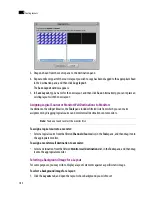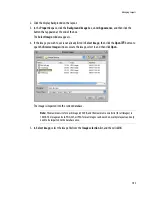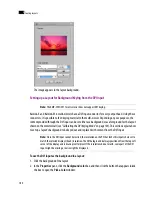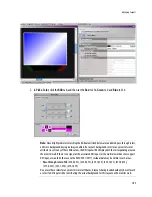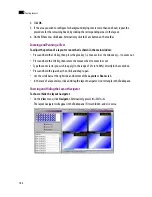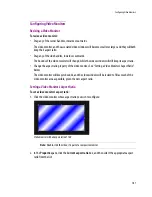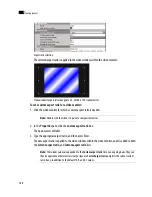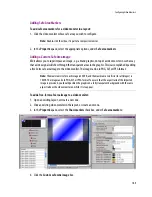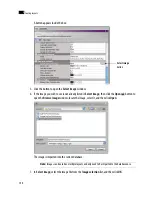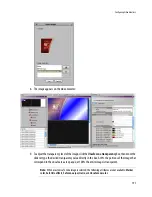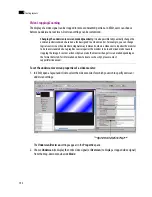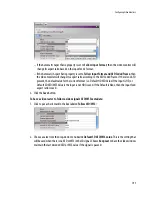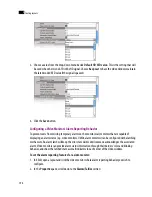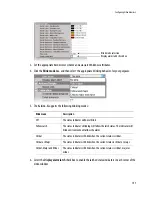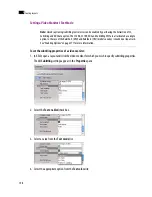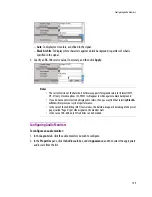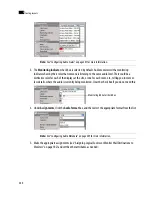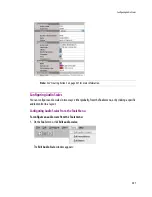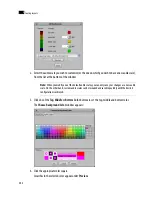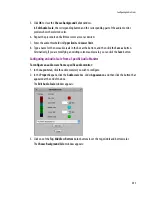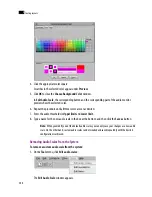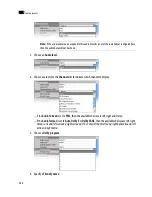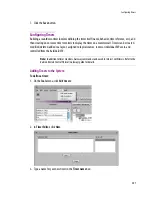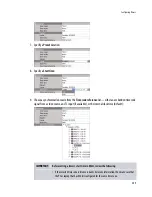
196
Creating Layouts
9
3. Choose a value from the drop-down menu beside
Default HD AFD value.
This is the setting that will
be used when there is no AFD in the HD signal. Choose
Keep Last
to have the video window maintain
the last decoded AFD value if the signal is paused:
4. Click the
Save
button.
Configuring a Video Monitor’s Alarm Reporting Behavior
To prevent users from missing temporary alarms on the monitor wall, monitors that are capable of
displaying an alarm status (e.g. video monitors, UMDs, alarm monitors) can be configured with a latching
mechanism. An alarm latch will keep the error state visible until someone acknowledges the associated
alarm. Video monitors can provide alarm status information through their borders’ color and blinking
behavior, and show the latched state as small indicators in each corner of the video window.
To set the alarm reporting features for a video monitor:
1. In XEdit, open a layout and click the video monitor whose alarm reporting behavior you wish to
configure.
2. In the
Properties
pane, scroll down to the
Alarms/Tallies
section:
Summary of Contents for Kaleido-X
Page 1: ...Kaleido X User s Manual Part Number M770 2800 111 1 June 2011 ...
Page 8: ...viii toc ...
Page 33: ...Loading a Layout 25 Kaleido X16 ...
Page 34: ...26 Getting Started 2 Kaleido X 4RU ...
Page 152: ...144 Creating Logical Sources 7 ...
Page 178: ...170 Setting Up Rooms 8 ...
Page 244: ...236 Creating Layouts 9 ...
Page 253: ...Detailed Directions 245 3 Under Properties General type a Friendly name for the Action ...
Page 256: ...248 Creating Actions 10 ...
Page 272: ...264 Managing Kaleido RCP2 Users 11 ...
Page 348: ...340 Tally Interface Devices 13 ...
Page 350: ......
Page 352: ...344 Using the Serial to TCP IP Dispatcher 15 ...
Page 406: ...398 Index ...

